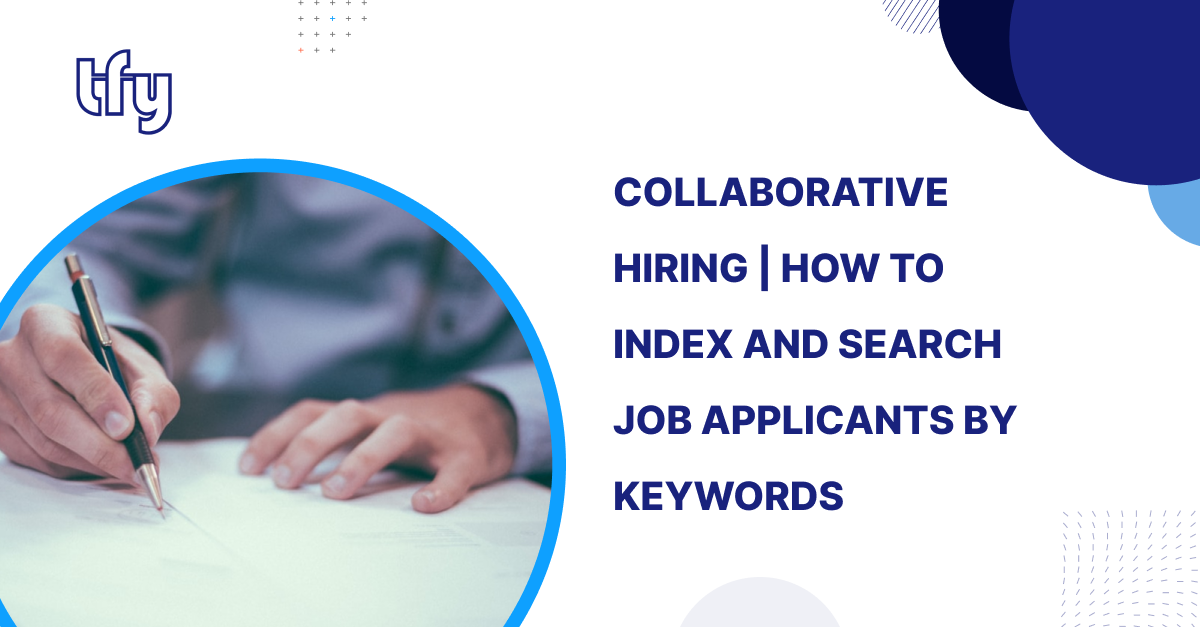
In today's competitive job market, effective candidate management is crucial for recruitment success. Collaborative hiring, which emphasizes teamwork among HR professionals, can significantly enhance the process of indexing and searching job applicants. Leveraging keywords is a key strategy in this approach, allowing recruiters to efficiently filter and identify candidates based on their skills and experiences. This article explores how to index and search job applicants using keywords within a collaborative hiring framework.
Understanding the Importance of Keywords
Keywords are specific terms or phrases that encapsulate the essential skills, qualifications, and experiences required for a job role. By utilizing keywords effectively, recruiters can:
- Streamline Candidate Searches: Quickly locate candidates who possess the necessary qualifications.
- Enhance Team Collaboration: Facilitate communication among hiring team members by using common terminology.
- Improve Job Postings: Optimize job descriptions to attract the right candidates by including relevant keywords.
Creating Competency Profiles
A powerful feature in collaborative hiring systems is the ability to create competency profiles for candidates. These profiles allow recruiters to:
- Define Key Skills: Identify and list the essential skills required for various roles.
- Utilize Keyword Clouds: Recruiters can develop keyword clouds that visually represent the most important competencies, making it easier to search for candidates who match these criteria.
- Searchability: All information within competency profiles is searchable, enabling recruiters to quickly find candidates who meet specific skill requirements.
For example, if a recruiter needs an Azure expert, they can simply enter "Azure" as a keyword in the search function, instantly retrieving all relevant candidates from the database.
Leveraging AI for Enhanced Search Capabilities
Integrating AI into the recruitment process can further optimize keyword indexing and searching. AI tools can analyze historical data and provide insights into candidate suitability based on various criteria. Key benefits include:
- Predictive Analytics: AI can assess past hiring patterns to predict which candidates are likely to succeed in similar roles. For instance, if a candidate previously applied for multiple roles but lacks a clear focus, the AI might flag them as less suitable.
- Automated Candidate Matching: When a new job is posted, the AI can automatically match it with existing candidates whose profiles contain relevant keywords, streamlining the recruitment process.
- Continuous Learning: The more data the system gathers about successful hires, the better it becomes at predicting future matches based on keyword relevance.
Efficient Candidate Management
Collaborative hiring systems allow recruiters to manage both active and passive candidates effectively:
- Active Candidates: Recruiters can track applications in real-time and leave comments for team members about each candidate's strengths or areas of concern.
- Passive Candidates: The system retains information about candidates who previously applied but were not hired. Recruiters can proactively reach out to these individuals when new roles become available that match their skills.
By searching through past applications using targeted keywords, recruiters can quickly identify potential fits for new openings.
Best Practices for Indexing and Searching Candidates
To maximize the effectiveness of keyword indexing and searching in collaborative hiring, consider these best practices:
- Regularly Update Competency Profiles: Ensure that competency profiles reflect current job market trends and organizational needs.
- Use Specific Keywords: Avoid generic terms; instead, use precise keywords that accurately describe necessary skills and qualifications.
- Encourage Team Collaboration: Foster an environment where team members share insights about candidate strengths and weaknesses using common keywords.
- Monitor AI Recommendations: Regularly review AI-generated suggestions to ensure they align with your recruitment goals and adjust parameters as needed.
By implementing these strategies within a collaborative hiring framework, organizations can enhance their ability to index and search job applicants effectively. This not only saves time but also increases the likelihood of finding the right talent for each role.



